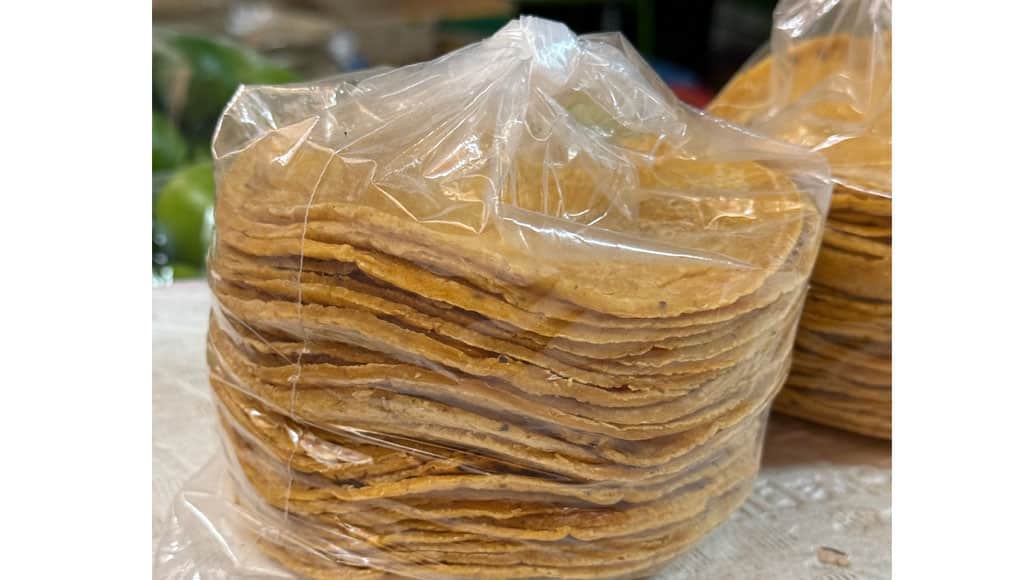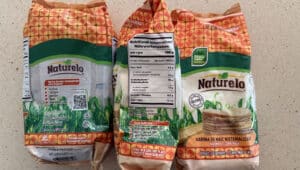It appears that the first tortilla was a gift. Maya legend suggests that when 12,000 years ago a hungry king demanded lunch, a peasant invented a tortilla as a gift to him. Made from corn (mixed with a little water), it was not only a demonstration of the greatest respect, worthy of a king, but also a nourishing meal.
In Mayan language, wa means “food” and “tortilla” at the same time. No wonder, they usually say “let us eat our tortillas” to invite guests to the table.
Broadly speaking, tortilla is a thin, flat, unleavened bread typical to the Mexican and Central American cuisines. The term itself actually comes from the Spanish word for “a little cake”. The word tortilla was attributed much later when tortillas made it across the ocean to Europe.
Interestingly, aside from the Spanish omelette, also known as tortilla, in some areas of southern Spain, one can find a slightly different kind of flat and round bread under the same name. It is made out of chickpea flour and has come to Spain from the Arab world.
For Mesoamericans, the ordinary tortilla is the stuff of life. Up until this day, its spirit roams the streets of the cities spread across this part of the world. In Mexico, it is captured by the unmistakable aromas of a wood smoke fused with the toasted corn that whiff off the local tortillerias, shops where tortillas are made. Though the art of tortear (tortilla making) is dying, locals swear that there is nothing better than hand-made tortillas.
Imagine a bunch of women, chatting away, standing around a hot comal,a flat griddle made out of cast iron, metal or even clay, and heated with wood, gas or charcoal, churning out hundreds of tortillas a day.
To make a corn tortilla, they take a pre-rolled 40 grams round ball of dough and flatten it either by hand or with the help of a tortilla press, called prensa. The dough has been made and weighed earlier by mixing (approximately) two parts of masa harina and 1.5 parts water; a pinch of salt is optional. A ball is a shape of choice as it helps to keep tortillas round.
A corn tortilla needs nothing more than a few minutes on a comal. It puffs up and charrs as it meets the heat, and usually it is turned every 15-20 seconds to cook evenly. To test a well-made tortilla, it should unfold without cracks and wrinkles after it has been scrunched in a palm.
To a tortilla novice, the process might seem easier than it is. The flour/water proportions must be spot on for the dough to gain the required elasticity and hydration. When using the tortilla press, it is common to deploy the help of a plastic sheet, which serves as a non-stick surface and allows to roll off tortillas with ease.
Patting it out by hand is yet another challenge. It begins by pressing the dough ball from centre to the edges with a firm but gentle finger movement and then repeating the motion with surgical precision whilst rotating the dough.
Due to a variety of corn, tortillas come in many colours. To start, there are the staple white tortillas made from white corn, a rather common variety. Then there are the yellow tortillas made from yellow corn, which is more customary to the north of Mexico, and is often used in Tex-Mex cuisine. The blue tortillas made from blue corn (maíz azul) can be found on the tables in Central Mexico. The red corn (maíz rojo) is used to make red tortillas.
Their colour is often further enhanced with such things as beet juice, hibiscus or cochineal, a traditional insect-derived dye. Red tortillas are particularly significant for the celebration of the Day of the Dead and some other symbolic festivities. Lastly, there are the purple/black tortillas made from the black corn variety. They are striking but quite rare and can often be found in the artisanal tortillerias of Oaxaca.
Whilst traditionally tortillas are made from corn, there are also now wheat tortillas. They arrived in Mexico together with the European settlers who brought the wheat. It is no surprise that wheat tortillas are more popular in the north of the country, where it borders the US, the frontier with the European population.
Preparing wheat tortillas has its own peculiarities too. The recipes often call for some kind of fat, typically pork lard, to be introduced into the dough. In addition to the classical methods of rolling, the wheat dough can also be rolled with the rolling pin. Similar to its corn sisters, wheat tortillas also love the heat of a comal. In case there is no comal in sight, a cast iron pan or even a high-heat pancake pan can also do the job.
Once made, hot off the pan with a little butter and salt, a corn or wheat tortilla is delicious on its own. The culinary applications of tortillas are many. So many that they require a separate conversation. Let’s discuss them the next time.
To be continued …

























